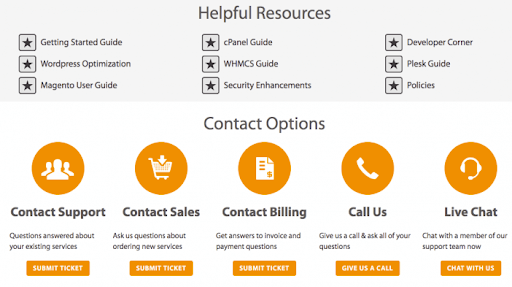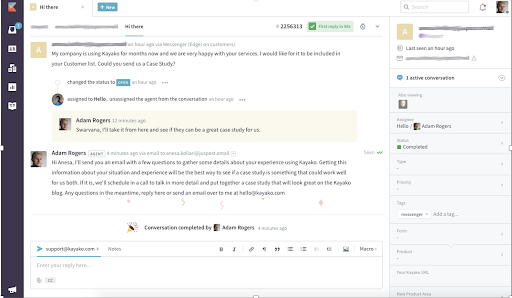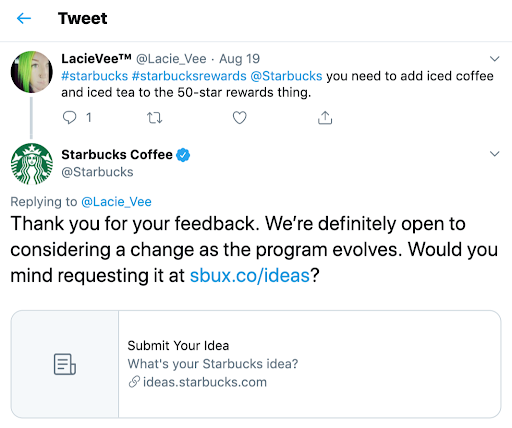Customer service teams often operate in silos, separate from the marketing, sales, design, and product management teams. This makes it hard for them to serve customers as well as they can. This demands building a cohesive customer service strategy that brings out the best of them, showing that customer service can support your marketing campaigns.
But if marketing and customer service work in tandem, they can bring about terrific results.
For instance, when a marketing team cooks up a campaign, it is best to keep the customer service team in the loop. This creates a successful marketing strategy where a marketing team better understands the customer’s common pain points, allowing them to tailor a more compelling marketing campaign.
You can unlock faster business growth by providing commendable customer service but only if they support the marketing team and vice-versa. A report suggests businesses blending marketing and customer service see 55% higher yearly improvement in customer satisfaction.
Let us find out how a customer service team can reinforce the marketing department.
#1. Emphasize Customer Service Quality
Customers crave a positive shopping experience when they make a purchase. They quickly turn to the customer service team when stuck. When crafting a marketing strategy, it is a good idea to emphasize your company’s customer service issues.
A study suggests that quality customer service is crucial to 73% of customers. Try promoting how you have a rapid response time or promise to address difficulties promptly.
Additionally, each customer has a preferred method of communication. This is useful information to add to the marketing brochures if you are already handling customers on several platforms.
For instance, if you have an online store, show that you have various options — e-commerce live chat, emails, phone calls, etc.

Source
Consider putting this information on your website as more than three-quarters of customers prefer contacting a business through its website than via a live operator.
Gathering queries from various channels would need you to leverage customer service software that integrates these channels into a single source of truth. So customers can share queries from their preferred channel while customer service agents can escalate issues easily to the technical/business department if needed.
For this, your customer support team needs quick access to blogs, knowledge bases, and video tutorials. One way to streamline accessing such data involves using digital asset management (DAM). Having DAM not only helps customer service teams but also allows your marketing team to create and manage access to digital data.
Blogs, knowledge bases, and video tutorials are all great ways to find help. It is ideal to blend these as a part of your marketing campaign. For instance, try sharing your most recent blog post on Twitter or add video tutorials to your email campaigns. On the other hand, have your customer service teams share a knowledge base and how-to manuals to simplify self-help.
#2. Customer Expectation-Setting
Leads that know exactly what they want from your business offerings are a sure sign that your marketing efforts are up to the mark. Moreover, when leads have defined expectations, the transition from lead to customer and the future experience of that customer becomes easier.
But, it all begins when they have the expectations that your business can fulfill. Setting the right expectations is necessary to reduce customer churn as marketing may help prevent customers from having unrealistic expectations.
On the customer service front, they will be able to alert the marketing team of situations with insufficient or false expectations. This will also mitigate likely disparities between the two teams.
Accordingly, the customer service team relays inputs from the customer queries to the marketing department. It helps identify the expectation gap and sets the bar for a marketing campaign.
For instance, if your video editing software is marketed as ‘fast and easy,’ customers will find it hard to render videos faster. Additionally, if the UI is cluttered, your customer service team will have a hard time. This is a huge cap in expectation, leaving your customer support team in a quandary.
#3. Know Your Brand Advocates
While customer service teams are used to managing a high volume of complaints, they may also come across some who are happy with your services. Suppose your customer has a positive experience with your product. In that case, the customer care staff might send the client’s contact information to the marketing team who can take it forward for different reasons, as mentioned below. This is a big way customer service can support your marketing campaigns.
- Surveys show that 84% of consumers trust internet reviews; therefore, marketers can reach out to happy customers and get testimonials published on websites, social media, etc.
- Emails, presentations, and other promotional materials can use customer testimonials to entice buyers to purchase a product.
- Case studies may also find statistical evidence on how your product benefits a particular organization.
Here’s an example:

Source
Marketers can filter the customer data depending on the campaign objectives (awareness, conversion, lead generation, etc.). Plus they can connect with customers to get their input.
#4. Integrate Social Media
Around 90% of customers connect to a brand over social media, compelling the marketing team to blend in the customer service plan for the same. This includes involving your customer service teams across all platforms — Facebook, Twitter, and Instagram, and providing timely customer responses.
Social media marketing helps enhance brand engagement and acquire new consumers. It enables you to understand your target audience better. Plus, it helps you promote your product and/or service as the best alternative for them.
For instance, a minor customer query should be handled effectively to drive brand affinity and push engagement.

Source
Such an approach would help your business in the following ways:
- Quick responses to engage customers: Social listening helps your brand to watch, respond, and attract your customers across social channels to cater to your customer service KPIs through social media marketing.
- Craft your business’ social reputation: Your customers will know about how you care for them as your customer service teams handle queries. It creates your brand reputation in the market where they’d know you are easily approachable on their preferred platform.
- Spread positive recommendations: When a customer is happy with the customer service, they are your brand champions recommending your brands over different social media platforms.
Wrapping up
It all boils down to how both your teams integrate meaningfully to work in a symbiotic manner. Customer service can support your marketing campaigns and significantly influence almost every part of your organization. This is why it is so important.
This involves listening to customers and knowing their issues to serve them better. Ideal customer service will remain multi-dimensional; the one shares inputs to the marketing and sales team while communicating their message to customers.
The first step in developing an internal marketing powerhouse is to recognize the relevance of departmental dependencies. Plus, recognizing the impact of such internal communications in fostering customer connections.
